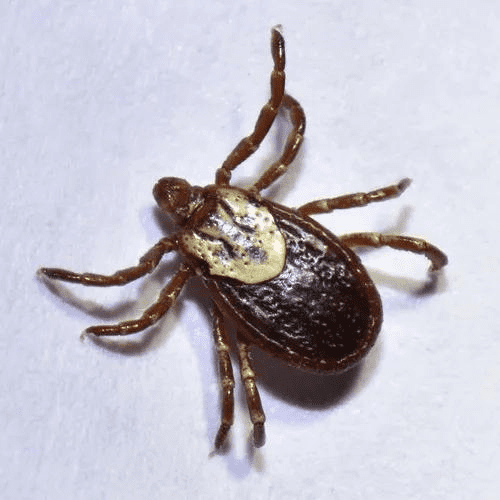American Dog Tick

Proud Supporter of Disabled Veterans
No Contracts
Services provided without written contracts.
Introduction to
The American dog tick, scientifically known as Dermacentor variabilis, is a common and potentially harmful pest found throughout North America. These ticks are known for their ability to transmit diseases such as Rocky Mountain spotted fever and tularemia. Understanding how to identify, prevent, and professionally manage American dog ticks is crucial for protecting both humans and pets from their bites and the diseases they can carry. This article explores the recognition, biology, habits, prevention, and professional handling of American dog ticks, providing a comprehensive guide to understanding and managing these pests.
Recognition
The American dog tick is a hard-bodied tick that can be identified by its size and distinct coloration. Adult ticks are approximately 5 to 15 millimeters long, with females being larger than males. They have a reddish-brown body with white or yellowish markings on their back. The tick’s body is oval-shaped and flattened, making it easy for them to attach firmly to their hosts. The mouthparts are visible from above, and the legs are dark brown. Engorged females can be much larger and appear grayish when filled with blood. Larvae and nymphs are smaller and more difficult to see but can still be identified by their characteristic shape and coloration.
Biology
American dog ticks undergo a three-host life cycle, consisting of four stages: egg, larva, nymph, and adult. Females lay thousands of eggs on the ground, which hatch into larvae. The larvae, also known as seed ticks, seek out small mammals like mice or birds for their first blood meal. After feeding, they drop off the host, molt into nymphs, and seek out a second host. The nymphs then feed and molt into adults, which typically prefer larger hosts like dogs, deer, or humans. The entire life cycle can take several months to years, depending on environmental conditions. American dog ticks are most active in spring and early summer.
Habits
American dog ticks are commonly found in grassy, wooded, and shrubby areas, particularly along trails and edges of forests. They are known to climb to the tips of grass or leaves and wait with outstretched legs to latch onto passing hosts, a behavior known as questing. Once attached, they find a suitable site to feed and can remain attached for several days. Ticks are attracted to the carbon dioxide and heat emitted by potential hosts. After feeding, females drop off to lay eggs, while males may seek additional hosts. Their bites are painless, but the site can become irritated or infected if not properly treated.
Prevention
Preventing American dog tick bites involves several proactive measures. When spending time in tick-prone areas, wear long sleeves, long pants, and closed-toe shoes, and use insect repellent containing DEET or permethrin. Perform regular tick checks on yourself, your family, and pets after outdoor activities. Keep your yard well-maintained by mowing the lawn regularly, removing leaf litter, and trimming shrubs and trees to reduce tick habitats. Create a barrier of wood chips or gravel between lawns and wooded areas to prevent tick migration. Use tick preventatives on pets as recommended by a veterinarian to reduce the risk of ticks hitching a ride into your home.
Professional
If you suspect an American dog tick infestation in your home or on your property, professional pest control services can provide effective solutions. STL Pest Control offers specialized treatment plans to manage and eliminate tick infestations. Their experienced technicians will conduct a thorough inspection to identify tick habitats and apply targeted treatments to reduce tick populations. They use environmentally friendly insecticides and provide advice on long-term prevention strategies to keep your property tick-free. Professional intervention ensures that tick problems are resolved safely and effectively, protecting your family and pets from tick-borne diseases.



Our Office







